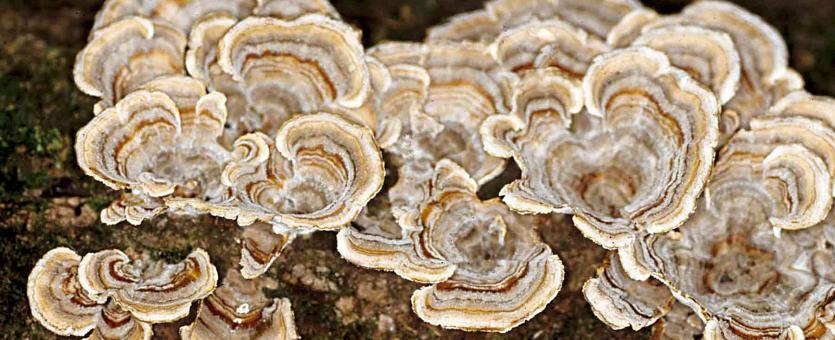
Clusters of leathery, thin brackets with multicolored zones above and whitish yellow pores below. Grows on stumps and logs of deciduous trees. Year-round. Cap semicircular to spoon-shaped, irregular, thin; zones of black-green, gray-blue, gray-brown, ochre-rust; texture leathery, with alternately hairy and smooth zones. Pores angular; whitish yellow. Stalk not present. Spore print white. Spores magnified are cylindrical, smooth. The bands of colors on the cap make the "true" turkey tail easy to recognize. The margin is always lightest in color.
Lookalikes: The false turkey tail (Stereum ostrea) is parchmentlike and has a smooth underside. The multicolor gill polypore (Lenzites betulina) has a gill-like underside.
Cap width: 1–4 inches.
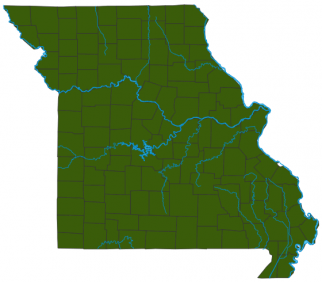
Statewide.
Habitat and Conservation
Grows in groups, rows, or clusters, often layered, on stumps and logs of deciduous trees. It is very common throughout North America.
Status
Edible/medicinal. The Chinese use the turkey tail as a remedy against liver cancer and jaundice. It can be ground and used as a tea or in soup.
Life Cycle
This species lives within rotting logs as a whitish network of cells (mycelium) that digests and decomposes the dead wood. When ready to reproduce, the mycelium develops the mushroom that emerges from the log—this is the reproductive structure. In polypores, spores are produced in the pores on the underside and are released to begin new mycelia elsewhere.
Human Connections
Humans have eaten mushrooms for thousands of years, in many cultures, for various purposes. Some, like this species, are eaten for medicinal properties. Of course, be absolutely sure of your identifications before you consume any wild mushroom.
Ecosystem Connections
This is one of the many fungus species that live on decaying wood. It and other such saprobic fungi play an incredibly important role in breaking down the tough materials wood is made of and returning those nutrients to the soil.
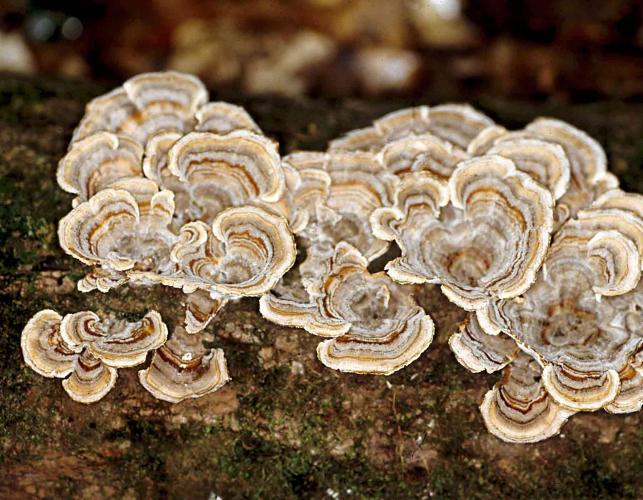
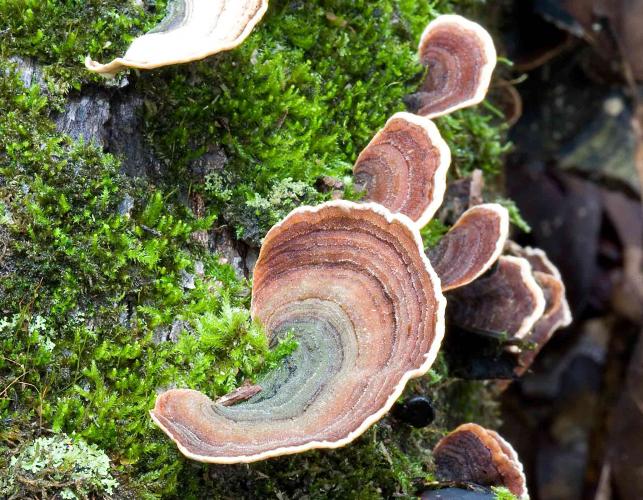
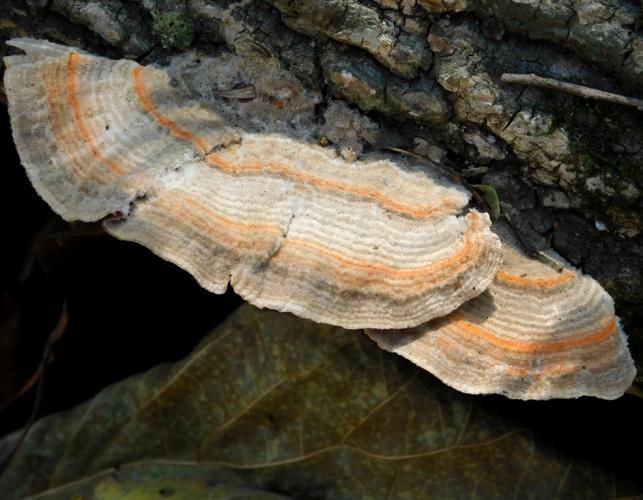
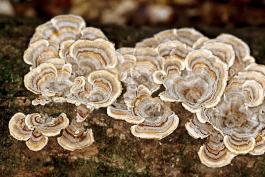
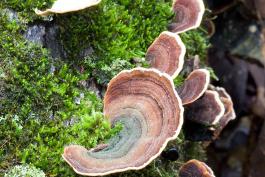
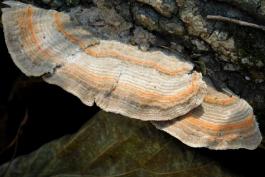
Mushrooms are a lot like plants, but they lack chlorophyll and have to take nutrients from other materials. Mushrooms are neither plants nor animals. They are in a different kingdom — the fungi. Fungi include the familiar mushroom-forming species, plus the yeasts, molds, smuts, and rusts.
Always be cautious when eating edible mushrooms. Be absolutely sure of the ID, and only eat a small amount the first time you try it to avoid a reaction..





















